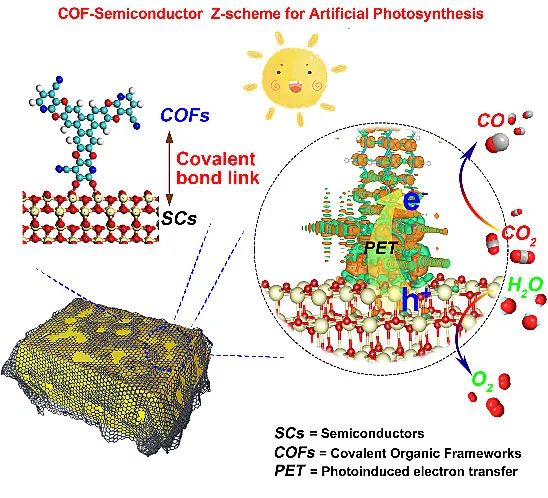
hotline:
17715390137
Tel/Wechat:
18101240246 (Technology)
0512-68565571
Email:mxenes@163.com (Sales Engineer)bkxc.bonnie@gmail.com
Scan the code to follow or search the official account on WeChat:
2D Materials Fronrier After paying attention,
click on the lower right corner to contact us,
Enter enterprise WeChat.
Professional Services Online

 In the field of artificial light synthesis, it is one of the most challenging photocatalytic reactions to achieve CO2 photoreduction with water as a sacrificial agent driven by visible light. Therefore, designing and synthesizing effective photocatalysts to achieve this reaction is crucial. Recently, the research group of Professor Lan Yagan of Nanjing Normal University designed and synthesized a series of Z-Scheme isomorphisms composed of crystalline covalent organic frameworks (COF-318, COF-316) and inorganic semiconductors (TiO2, Bi2WO6 and α-Fe2O3) Catalysts for solidified composite materials. These composites can achieve efficient CO2 photoreduction reactions using water as an electron donor, without the need for additional photosensitizers and sacrificial agents. Driven by visible light, this Z-Scheme heterojunction catalyst achieves efficient electron-hole separation and transfer between COF and oxide semiconductors under photoexcitation and effectively reduces and oxidizes CO2 occurring on COF through covalent bonds. Water oxidation reactions on the semiconductor are connected in series (Figure 1).
In the field of artificial light synthesis, it is one of the most challenging photocatalytic reactions to achieve CO2 photoreduction with water as a sacrificial agent driven by visible light. Therefore, designing and synthesizing effective photocatalysts to achieve this reaction is crucial. Recently, the research group of Professor Lan Yagan of Nanjing Normal University designed and synthesized a series of Z-Scheme isomorphisms composed of crystalline covalent organic frameworks (COF-318, COF-316) and inorganic semiconductors (TiO2, Bi2WO6 and α-Fe2O3) Catalysts for solidified composite materials. These composites can achieve efficient CO2 photoreduction reactions using water as an electron donor, without the need for additional photosensitizers and sacrificial agents. Driven by visible light, this Z-Scheme heterojunction catalyst achieves efficient electron-hole separation and transfer between COF and oxide semiconductors under photoexcitation and effectively reduces and oxidizes CO2 occurring on COF through covalent bonds. Water oxidation reactions on the semiconductor are connected in series (Figure 1).




| Reminder: Beijing Beike New Material Technology Co., Ltd. supplies products only for scientific research, not for humans |
| All rights reserved © 2019 beijing beike new material Technology Co., Ltd 京ICP备16054715-2号 |